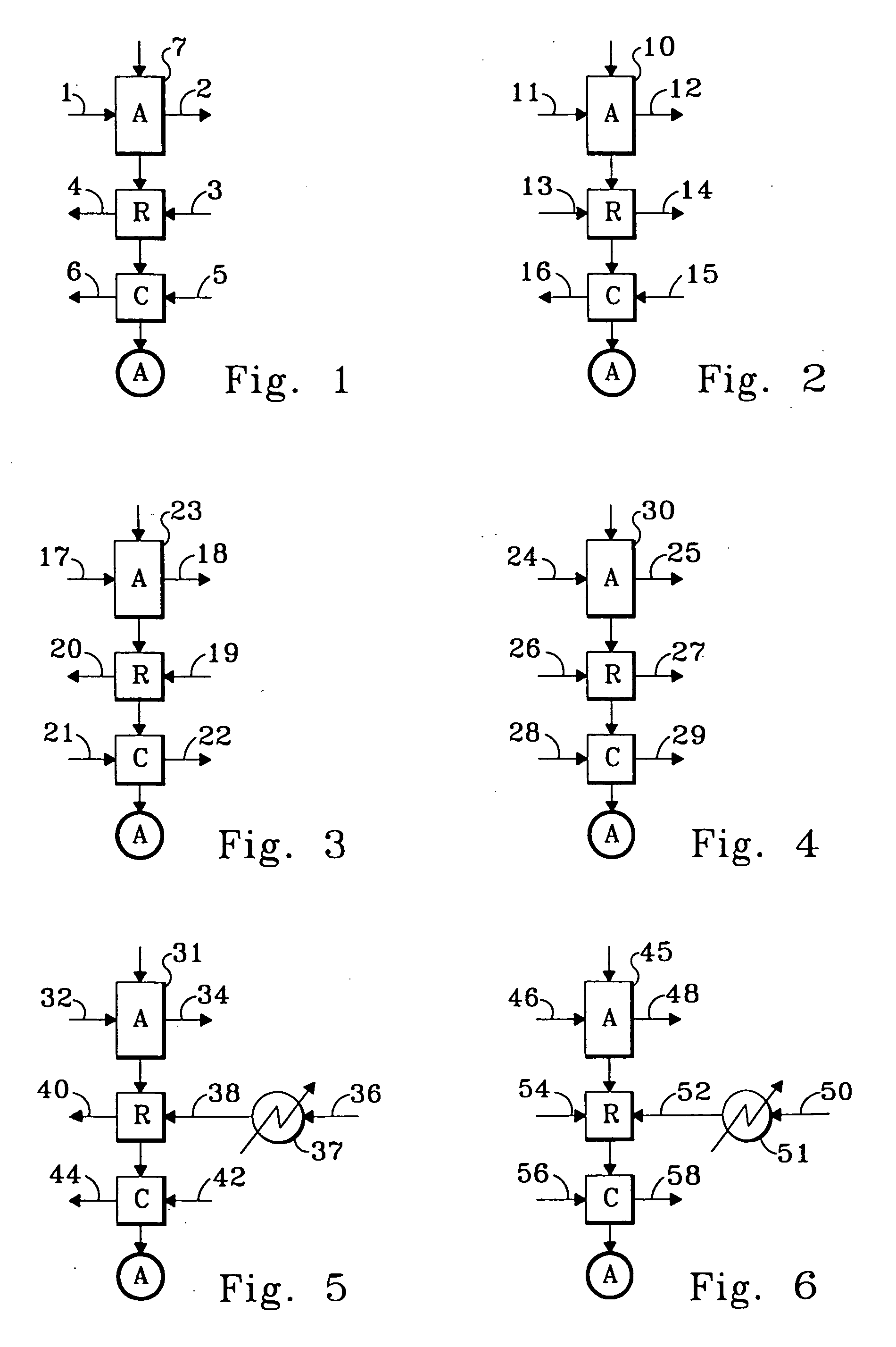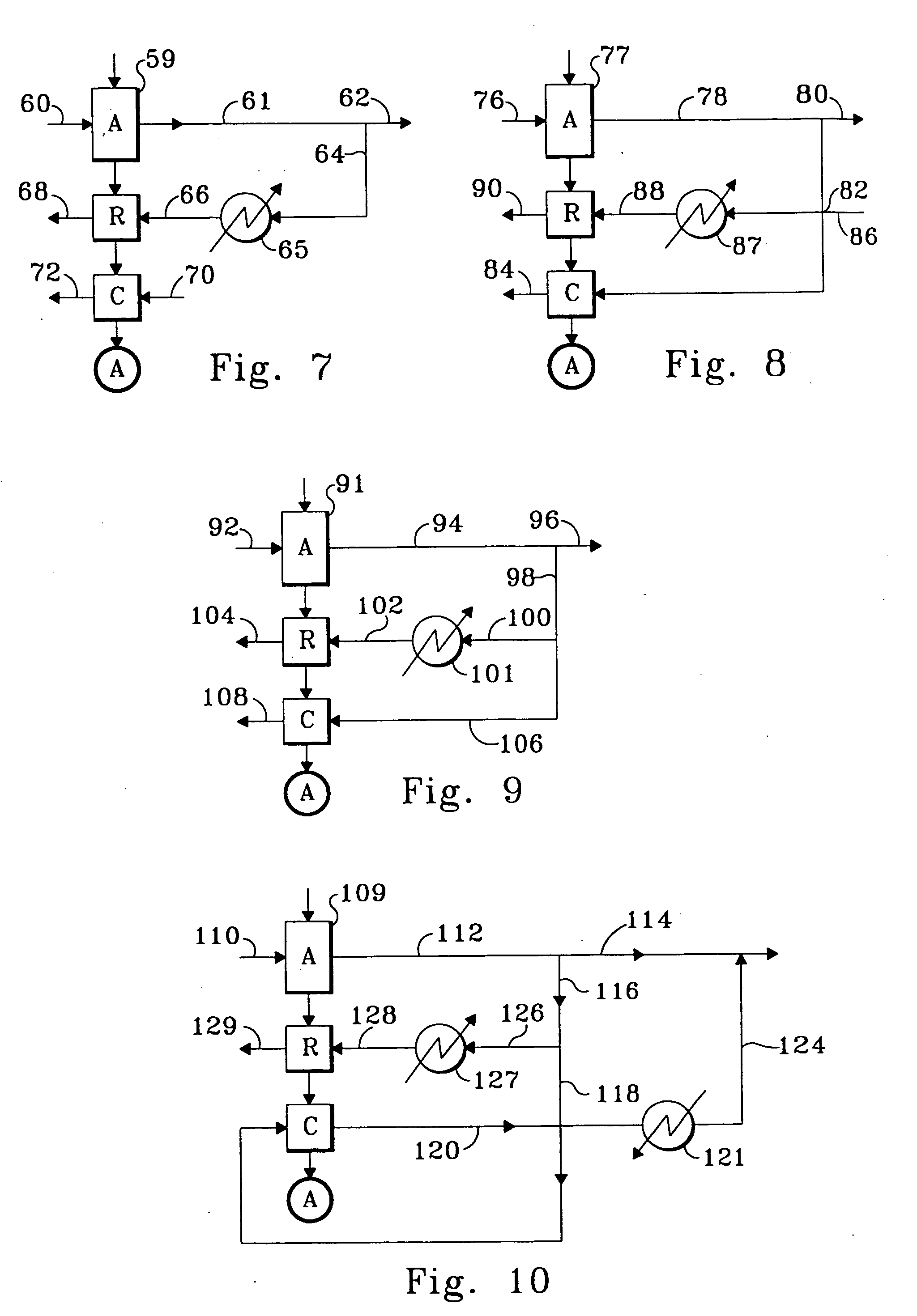Rotary adsorbent contactors for drying, purification and separation of gases
a contactor and rotary technology, applied in the direction of separation process, dispersed particle separation, chemistry apparatus and processes, etc., can solve the problems of high capital and energy costs associated with psa systems, unsatisfactory energy usage and high capital costs, and the purge and chilling of feed adds to both the capital and operating costs of the process, so as to achieve higher purity. the effect o
- Summary
- Abstract
- Description
- Claims
- Application Information
AI Technical Summary
Benefits of technology
Problems solved by technology
Method used
Image
Examples
example 1
[0062] A single rotary adsorbent contactor was assembled. It had an outside diameter of 250 mm with a 64 mm hub. The depth of the wheel in the flow direction is 200 mm. The adsorbent media contained UOP MOLSIV DDZ-70. The adsorbent media is nominally 70 wt-% of the DDZ-70 adsorbent, the balance being fibrillated polyaramid fibers and a small amount of organic binder. The adsorbent media is a corrugated structure having cells running parallel to the axis of rotation. The structure has an open face area fraction of about 72%. The adsorbent media density as flat stock has a characteristic density when activated of about 0.83 grams of media per cubic centimeter. The apparent density of the adsorbent portion of the rotary contactor is about 0.224 gram / cubic centimeter.
example 2
[0063] A laboratory test facility was constructed. A blower capable of supplying approximately 4248 standard liters per minute (SLPM) (150 standard cubic feet per minute (SCFM)) at approximately 5 inches of water column head pressure was provided.
[0064] A variable damper was used to control the flow. The outlet of the blower and its damper was directed into a humidistat that was used to introduce moisture into the air stream.
[0065] The flow rate, temperature, static and dynamic pressure and moisture content of the air stream from the humidistat were measured and controlled.
[0066] The rotary contactor of Example 1 was mounted inside a cassette that encloses the contactor, the drive motor, and provides for ducts that direct flows to and away from the faces of the wheel. On the feed air supply side of the wheel one partition separates the feed air from the combined regeneration and cooling waste products. The face areas allotted to these parts of the face are approximately equal.
[0...
example 3
[0071] The test facility of Example 2 with the rotary adsorbent contactor of Example 1 was run with the conditions shown in Table I. In the row labeled Observation number 39, an air flow of 2832 SLPM (100 SCFM) was introduced into the humidistat and subsequently into the adsorber section of the contactor. In this example the regeneration flow was ambient air with approximately the same conditions as the stated feed air with the exception that the regeneration air was heated to 151° C. (304° F.). This air was flowing in a direction counter-current to the feed air. The cooling air was taken as a minor portion of the gross product of the adsorbing sector of the contactor. The rotation rate of the adsorbent contactor was 37.89 revolutions per hour. In this example, the contactor removed a major portion of the water contained in the feed air. The final product contained 748 parts of water by volume per million parts of water containing air (ppm(v / v)). Water content of the air was reduced...
PUM
 Login to View More
Login to View More Abstract
Description
Claims
Application Information
 Login to View More
Login to View More - R&D
- Intellectual Property
- Life Sciences
- Materials
- Tech Scout
- Unparalleled Data Quality
- Higher Quality Content
- 60% Fewer Hallucinations
Browse by: Latest US Patents, China's latest patents, Technical Efficacy Thesaurus, Application Domain, Technology Topic, Popular Technical Reports.
© 2025 PatSnap. All rights reserved.Legal|Privacy policy|Modern Slavery Act Transparency Statement|Sitemap|About US| Contact US: help@patsnap.com



